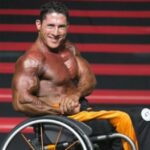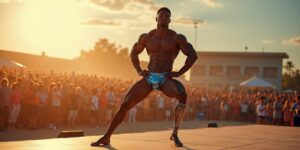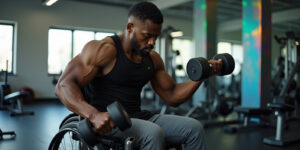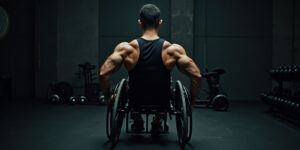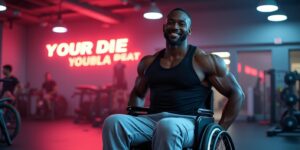Bodybuilding is a form of weight lifting that involves the controlled production of recoil that forms part of the body’s EOS (Eccentric Overload System). It can be done for aesthetic and performance-based goals, and it can help people with disabilities manage pain, build muscle mass, and improve overall body strength.
But bodybuilding as a disabled individual comes with its fair share of challenges. Not only does one have to deal with physical limitations, but mental barriers and societal pressures are also present. This blog will cover some of the most effective strategies for training as a disabled bodybuilder along with tips to maximize your performance and ensure safety while bodybuilding.
What are the most effective strategies for training as a disabled bodybuilder?
If you want to train as a disabled bodybuilder, it’s important to work with a personal trainer and develop a training plan that addresses your disability and goals. This will ensure you get the most out of your workouts and experience the same level of success as non-disabled bodybuilders.
- To begin, discuss your needs and abilities with your trainer. He or she can help identify the right exercises for you, based on your disability and capabilities. This could include using adaptive equipment, such as special chairs or stands, or specialized machines, such as treadmills or resistance bands.
- Another key aspect to safe bodybuilding is working slowly and focusing on proper form. This not only reduces the risk of injury but also helps build stronger, more efficient muscles.
- Aiming for consistency and progress over time rather than immediate results also goes a long way in ensuring success.

How can I maximize my performance while training with a disability?
If you are a bodybuilder with a disability, there are a few things you can do to maximize your performance and meet your fitness goals.
- You can consider modifications to the training regimen and equipment to make it easier for you to train. This can include using an alternate grip on the bar or using assistive devices, such as a lift board, when doing bodyweight exercises.
- Additionally, you can take advantage of accessibility resources like adaptive sports programs to help you develop and practice skills that work for your body.
- Developing a strong support system of friends, mentors, and coaches is vital for bodybuilding with a disability. This group of people can provide valuable encouragement and support throughout your journey.
- Finally, focus on proper nutrition and supplementation to fuel your body. Stay positive and embrace the challenge of pushing yourself further.
By taking these steps, you can reach your fitness goals and become the strongest bodybuilder with a disability possible.
What are some ways to manage pain and fatigue while bodybuilding with a disability?
If you are disabled bodybuilder, it’s important to be aware of the ways you can manage pain and fatigue while bodybuilding.
Firstly, you should adjust your exercises and routine to accommodate your disability. Doing so will help you avoid unnecessary injury and increase your body’s ability to perform the activity.
Second, make use of adaptive equipment when possible. This can help bodybuilders with disabilities access the same levels of physical activity as non-disabled people.
For example, a bodybuilder with a mobility impairment may use a walker or a crutch during workouts, but not necessarily for every session. That way, he or she can still get the same level of exercise as non-disabled people. Also, incorporate rest days into your fitness schedule to allow for recovery time from workouts. This will ensure your body has adequate time to heal after training sessions.
Third, bodybuilding with a disability can be beneficial with the help of a personal trainer or coach who understands the needs of disabled bodybuilders.
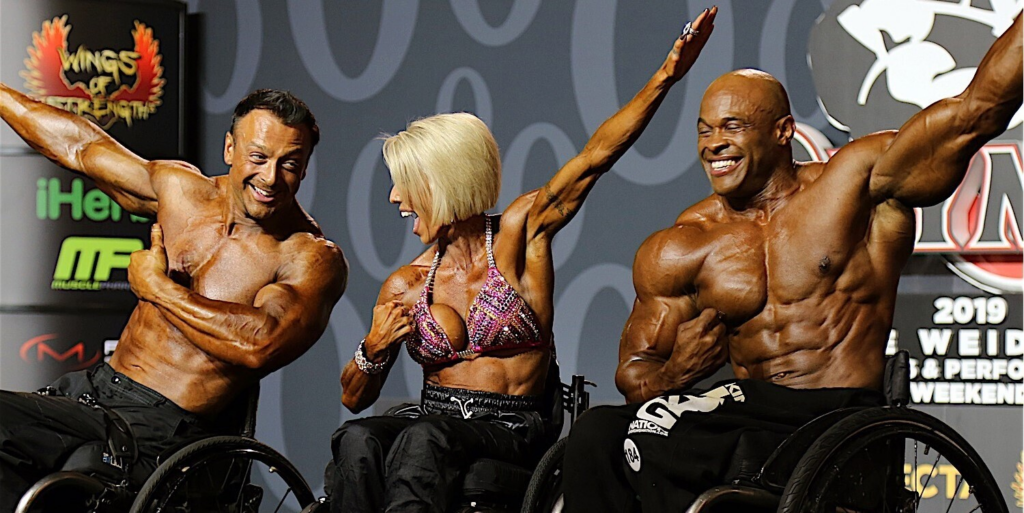
What safety measures should be taken to ensure that disabled bodybuilders remain safe while exercising?
As a bodybuilder with a disability, it’s important to follow the same safety guidelines as everyone else to prevent injury. A physical therapist or doctor can create an individualized exercise plan tailored to your needs and goals. This will help you stay safe and achieve your fitness goals.
One of the best pieces of equipment for bodybuilders with disabilities is a weight lifting belt. They provide support and stability during workouts, which can help reduce discomfort and improve results. Weightlifting wrist wraps and braces are also beneficial for bodybuilding with a disability. These can help bodybuilders safely increase the amount of weight they can lift without risk of injury.
It’s also important to make sure your gym is accessible and has the necessary adaptive equipment, such as wheelchair access and height-adjustable benches. By following these safety measures, bodybuilders with disabilities can enjoy high-level bodybuilding without fear of injury.
Best Tips to Thrive As A Disabled Bodybuilder
If you’re a bodybuilding disabled athlete, you can still thrive and achieve your goals. However, it involves taking into consideration your disability and how it affects your workout routine.
- Start by incorporating assistive devices into your exercise routine when needed. This can include devices such as canes, walkers, or braces for assistance with movement or stabilization, depending on your specific needs and goals.
- Avoid focusing only on the weight of the exercise but also the difficulty of the movement. This will help ensure you are able to stay engaged and motivated throughout each exercise.
- To achieve maximum results, focus on proper form and technique. This means following proper bodybuilding protocol and practicing bodybuilding lifts correctly in order to avoid injury and fatigue.
- Additionally, develop an effective rest-and-recovery plan that addresses factors such as hydration, nutrition, sleep, and activity levels to prevent injury and fatigue from developing in the first place.
Words From Shamsher Foundation
As a disabled bodybuilder, you’ve already shown extreme dedication and perseverance. So it only makes sense that you would continue to find new and innovative ways to push your body to its limits. Besides, bodybuilding is an incredibly flexible workout routine: You can create a routine that works for you—whether it’s bodyweight exercises, resistance bands, or even exercising from a seated position. But with the right adjustments, bodybuilding can be a fulfilling and rewarding workout routine for anyone with any disability.
So if you want to start bodybuilding, go ahead! You can do it!

